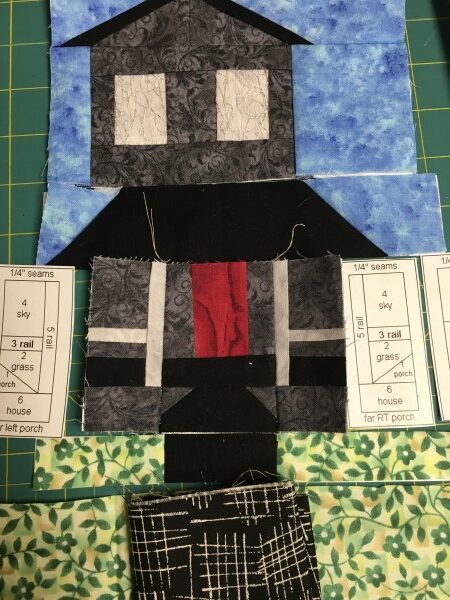I have a dentist appointment today. Like many people, I freak out at the dentist.
Who Wouldn’t Be Afraid?
I am powerless and someone is going to hurt me, and I have no control over that.
Gaining control over my fear is something I do have power over. It’s not easy, but it’s possible. I have had help in coming up with a plan for today, and I will do my best to follow the plan.
This appointment is at a teaching clinic. During the initial “get to know me” appointment, I shared ALL of the trauma that contributed to my TMJ issues. No details, just that certain kinds of trauma happened. One trauma was a surprise to the student dentist, and I am quite sure that information was shared among the other students.
In fact, I hope it was shared. It is important to know how to deal with patients who have been traumatized. Be assured that it will come up at some point. I am honoured to be a “teaching patient”.
His response to me was excellent…and incomplete. He classified this trauma as a psychological trauma rather than physical trauma to the jaw (which is all I was sharing). His expectation is that the psychological trauma will cause me to feel pain differently than someone who has not been traumatized. And that I will have anxiety issues. These two assumptions may (are probably) correct. But my point was that there have been multiple physical traumas to my jaw and that information is essential to forming a complete picture, which will lead to the most effective treatment.
I wrote this post because I realize that my experiences can help others. I am late to the game in learning coping strategies that are really effective. Up until a few years ago I believed my only solution was grit my teeth and get through it…which may explain some of that TMJ problem! There are better options for traumatized patients, and I truly believe that the medical community wants to understand how to help us too.
Tips For Student Doctors
DO ask more questions when you get to a sensitive topic to ensure that you understand the patient. Traumatized people often need compassionate encouragement to fully express some things. I don’t think I fully expressed the fact that it was physical trauma I was reporting, and that the psychological trauma is something I am successfully addressing elsewhere. Being heard is a relief to many traumatized patients.
DO respect the patient’s choices. Your patient may opt not to answer and that’s ok. For some patients, explaining only increases their anxiety.
PRO TIP: offer the patient the choice not to answer.
Tips For All Medical Students
DO absorb the trauma information that has been shared. Don’t take on the trauma. Your job is not to be a therapist (unless that is the profession you’ve chosen!). Your patient doesn’t need your sympathy, they need to know you have the information to treat them effectively.
DO adjust your treatment of the patient accordingly. Be sensitive to the idea that your treatment may trigger a traumatic response. It’s not about you. You can help by understanding this and not taking it personally. For me, a clinical approach (“just the facts, ma’am”!) really helps. For others, it may be different.
DO ask your instructors for help if you’re unsure how to help a traumatized patient. Consider doing some role play scenarios with your fellow students to practice.
DO ask the patient how you can best support them today. Accept that they might not know immediately how you can support them. Let them know you will listen if they choose to speak up later.
DO NOT use the patient’s disclosure as a springboard for sharing your traumatic experiences. Your patient is already dealing with their own traumas, they do not need to (and can not) process yours. They are not being rude; they simply don’t have the bandwidth for anything more. If they were not already dealing with their own crap, chances are that they would want to be a compassionate listener for you. PLEASE DO get help from a qualified therapist if that will be helpful to you.
UNDERSTAND that your patient needs to be “selfish”, to focus all their attention on their coping strategies during the appointment.
DO be gentle with yourself. We are all learning. If you feel you made a mistake, acknowledge it, learn how to do better next time, and move on. If you need help, ask your instructors. You can even ask your patients for feedback, if you give them the option to not answer if they don’t feel comfortable.
Tips For The Medical Community
DO expect to deal with a lot of traumatized patients. They are everywhere. I expect every medical professional has had a traumatized patient that was a challenge to treat. Hats off to you for continuing the work you do.
DO educate yourselves. A ton of resources are available now that were not available a decade or more ago. Learn about ACEs, Adverse Childhood Experiences. Here is one resource: https://www.albertafamilywellness.org/what-we-know/aces. Read The Deepest Well https://amzn.to/341rk9y (affiliate link) by Nadine Burke Harris, M.D. I’m confident that the medical community has access to many more resources for treating traumatized (aka “difficult”) patients.
PRO TIP: share resources you find helpful with your medical community. Share (respecting privacy of course!) experiences and strategies for supporting your traumatized patients.
DO ask how you can best support a patient who discloses trauma to you. Ask them how you can support them to get through the appointment. Don’t be surprised if they don’t have an answer right away and tap you on the arm 15 minutes later with an answer.
Tips For Traumatized Patients
This is your appointment. This is your time. Do whatever you need to do to cope with the anxiety, the fear, and whatever else is happening. You do not need to apologize for being a “difficult” patient, it’s not your fault you’re emotionally overloaded.
DO tell the medical staff what you will be/are experiencing (anxiety, zoning out, dissociation, etc.).
DO tell the medical staff what you need (frequent breaks from dental treatment, instructions written down in case you’ve missed something because you zoned out, specific help with grounding – like the doctor saying your name and checking in with you, etc.).
DO give the medical staff the opportunity to help you. If they didn’t care about you, they never would have gone into a medical profession. Make this assumption until proven wrong…if you’re wrong, find a different professional.
DO get help from your own support people to make a plan for coping before you get to the appointment.
Above all, give yourself a high five. You can do this. I believe in you.
Share Your Comments
Do you have coping strategies for scary situations? Consider sharing them in the comments. Your strategy might be the perfect one to someone who really needs it.










